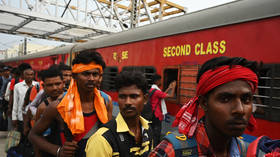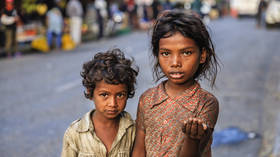India’s top 1% holds 40% of country’s wealth – study

India’s richest 1% of the population earned 22% of the country’s income and held 40% of its wealth during the last financial year, a new study published this week has suggested. These levels are “historically high” for India and even above those of developed economies such as the US, the paper notes.
The research paper, co-authored by economists Kumar Bharti, Lucas Chancel, Thomas Piketty, and Anmol Somanchi, claims that wealth in India, the fastest-growing large economy globally, is largely concentrated among the richest 1% of the population, whom they refer to as India’s modern bourgeoisie. They claim that the wealth distribution in the country is now more unequal than during British colonial rule.
“In 2022-23, 22.6% of national income went to just the top 1%, the highest level recorded in our series since 1922, higher than even during the inter-war colonial period. The top 1% wealth share stood at 40.1% in 2022-23, also at its highest level since 1961 when our wealth series begins,” the study says.
Citing data from the Forbes billionaire rankings, the paper said the number of Indians with net wealth exceeding $1 billion increased from one in 1991 to 162 in 2022. Over this period, the total net wealth of these individuals as a share of India’s net national income surged from under 1% in 1991 to a whopping 25% in 2022.
At present, India’s richest person, Mukesh Ambani, who is also the richest in Asia, has a net worth of $114 billion. He was recently in the news for hosting a lavish wedding for his son that was attended by dozens of international celebrities, including Bill Gates, Meta’s Mark Zuckerberg, Blackrock co-founder Larry Fink, Alphabet CEO Sundar Pichai, Ivanka Trump, and others.
Despite the reported disparities in income, the Indian economy is growing robustly and is poised to become the third largest in the world within the next three years. The country’s GDP grew 8.4% between October and December 2023, the fastest pace of increase in six quarters.
The country’s central bank, in its latest bulletin, noted that India can maintain its 8% GDP growth given the favorable macroeconomic environment.
Meanwhile, the federal government has introduced initiatives in an attempt to improve the quality of lives for those considered “poor.” In January, 30 cities were identified to be made “free of beggary” by 2026 as part of the Support for Marginalized Individuals for Livelihood and Enterprises scheme. New Delhi is also setting up a high-powered committee to consider the challenges arising from “fast population growth and demographic changes.”
In 2023, a report on poverty by the government advisory body NITI Aayog said the country had lifted 135 million Indians out of poverty in the previous five years. According to a UNDP report published last year, multidimensional poverty fell from 25 to 15% between 2015-16 and 2019-21.
Where India Meets Russia – We are now on WhatsApp! Follow and share RT India in English and in Hindi













